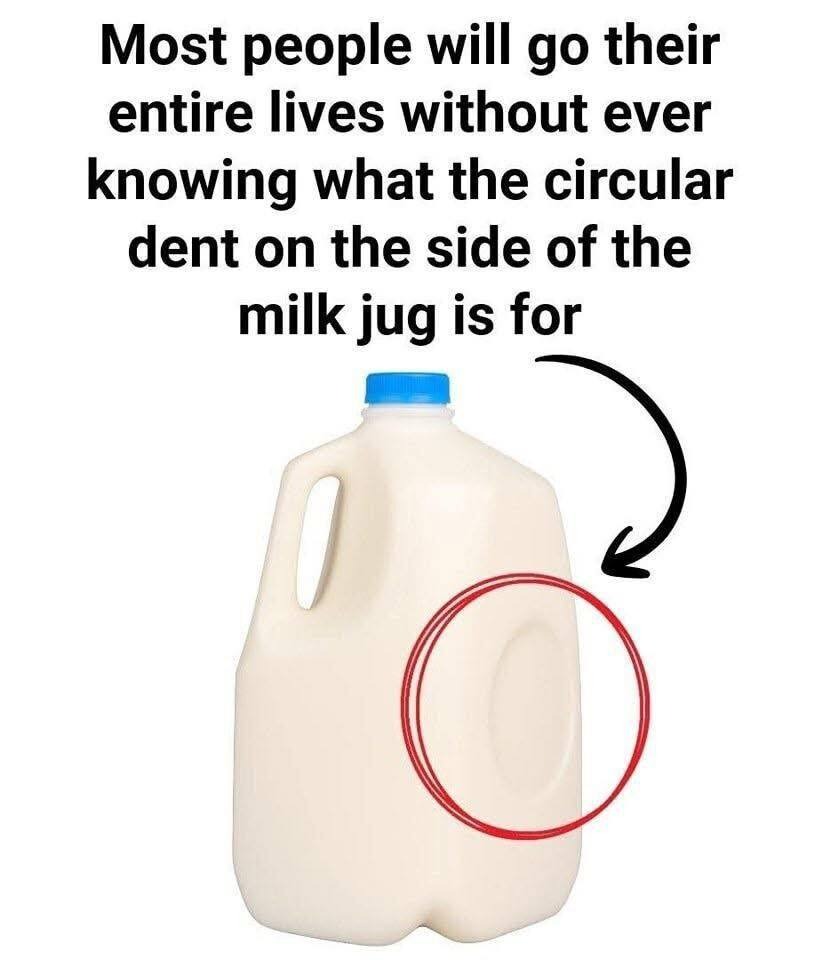Think of the support arches in architecture—they add strength using shape, not weight.
The indentation reinforces the structure of the jug, allowing it to stay sturdy while remaining lightweight and inexpensive to produce. Clever, efficient design at its best.
⚠️ A Warning Sign for Spoiled Milk
Here’s an interesting twist: sometimes, if milk spoils, bacteria inside the jug produce gas. This gas builds pressure and can cause the dent to bulge outward.
If you notice a milk jug where the dent is puffed out or looks strange, take it seriously—it may be a sign the milk has turned.
(Not every bulge means spoiled milk, but it’s a good early warning.)
Why a Circle?
Why choose a circular shape instead of a square or triangle?
Circles handle pressure best. With no sharp corners to concentrate stress, pressure distributes evenly around the edge. That makes the circle perfect for an area designed to flex with temperature changes and handling.
Plus, circles are easy to manufacture consistently. Simple, strong, and efficient.
Other Clever Milk Jug Details
While we’re appreciating smart design, here are a few more things you might not have noticed:
Handle Hole: Not just for grip—removing plastic here reduces material use.
Bottom Ridges: Those bumps on the base help the jug sit evenly, even on slightly uneven shelves.
Cap Colors: Many brands use cap colors to signal fat content (like blue for 2% or red for whole milk).
It’s pretty amazing how much thought goes into something we barely notice.
ADVERTISEMENT

